In the field of oil and gas pipelines,
X100Q straight seam steel pipe, as a high-performance pipeline steel product in the API5L standard, is gradually becoming the preferred material for long-distance high-pressure transmission pipelines with its excellent mechanical properties and welding characteristics. The technical parameters and engineering application value of this straight seam welded steel pipe manufactured by high-frequency electric resistance welding (ERW) or submerged arc welding (SAW) process are worth in-depth discussion.
From the perspective of material properties, X100Q steel grade belongs to high-strength micro-alloy steel with a yield strength of 690MPa. Grain refinement and precipitation strengthening are achieved by adding trace elements such as niobium, vanadium, and titanium. Compared with the traditional X80 steel grade, the hoop stress bearing capacity of X100Q is increased by about 25%, and the pipe wall thickness can be reduced by 15%-20% under the same transmission pressure, significantly reducing material costs and transportation weight. Calculations of a large-scale pipeline project show that the use of X100Q steel pipes can save about 40 tons of steel per kilometer of pipeline, and the economic benefits are particularly prominent in long-distance pipelines over 300 kilometers.
In terms of manufacturing technology, modern straight seam welded steel pipe production lines have achieved full process automation control. Taking the process parameters published by a certain company as an example, the steel plate pretreatment uses laser rust removal to achieve Sa2.5 cleanliness, the forming process uses UOE three-stage cold bending technology, and the welding process uses multi-wire submerged arc welding (up to 5 wires). After welding, it undergoes offline heat treatment at 880℃×6 minutes, and the Charpy impact energy of the weld area of the final pipe body can reach more than 220J (-20℃). It is worth noting that the API5L standard has extremely strict requirements for weld defect detection of X100Q welded steel pipes, and usually requires the combined application of three non-destructive testing technologies: ultrasonic flaw detection (UT), eddy current testing (ECT) and X-ray imaging (RT) to ensure that the defect detection rate is not less than 99.7%.
In the field of anti-corrosion technology, X100Q straight seam welded steel pipes generally adopt a three-layer PE anti-corrosion structure. Specific data show that a 2.8mm thick epoxy powder primer + adhesive + polyethylene protective layer system can achieve an anti-corrosion life of more than 30 years under 3.5kV electric spark detection. For special corrosive environments, fusion bonded epoxy powder (FBE) or polyurethane coating can also be selected. The measured data of a Central Asian pipeline project showed that the annual corrosion rate of X100Q steel pipes with enhanced 3LPE anti-corrosion in H2S-containing media is less than 0.02mm/a, which is much better than the limit requirements of API RP 1183.
Among the engineering application cases, the natural gas pipeline project is the most representative. The 1422mm diameter X100Q straight seam welded steel pipe used in this project has a design pressure of 12MPa and a single pipe pressure bearing capacity of 38MN (about 3,800 tons). It is particularly noteworthy that in order to adapt to the low temperature environment of -40℃, the chemical composition of the pipe is specially controlled to control the carbon equivalent Ceq≤0.43%, and the phosphorus and sulfur contents are limited to 0.015% and 0.003% respectively. The on-site girth weld adopts an automatic welding process. The preheating temperature is strictly controlled in the range of 100-120℃, and the post-weld heat treatment parameters are 580℃×2 hours to ensure that the hardness of the heat-affected zone does not exceed 248HV10.
Future development trends show that X100Q straight seam welded steel pipe technology is making breakthroughs in three directions: first, developing deep-sea pipes with a thickness of more than 30mm to meet the laying requirements of water depths of more than 1,500 meters; second, developing a fully automatic welding system that matches the X100Q steel grade. At present, Lincoln Electric's PowerWave® R450 welder can achieve a stable welding speed of 0.8-1.2m/min; third, the integration of intelligent pipeline technology, by embedding optical fiber sensors in the pipe wall to monitor the stress and strain state in real time. The industry predicts that by 2028, X100Q's market share in the global high-pressure natural gas pipeline will increase from the current 15% to more than 35%.
In terms of quality control system, leading manufacturers have established a full-process traceability system from steelmaking to finished products. Taking the MES system of a certain factory as an example, each X100Q steel pipe contains 87 process parameter records, and the service performance of the pipe can be predicted through big data analysis. API Q1 system certification requires SPC statistical process control for key processes such as plate probing and diameter expansion to ensure that the CpK value is continuously greater than 1.33. Data from third-party testing agencies show that the dimensional qualification rate of X100Q welded steel pipes from mainstream manufacturers has reached 99.92%, and the one-time pass rate of water pressure tests exceeds 99.5%.
From the perspective of standard specification evolution, the 46th edition of API5L specifically adds Charpy impact test requirements for X100Q steel grade, stipulating that the impact energy of the parent material at -30℃ shall not be less than 190J, and the impact energy of the weld area shall not be less than 150J. The ISO3183-2019 standard refines the strain aging test method for X100Q steel pipes, requiring that after 5% pre-strain + 250℃ × 1 hour aging treatment, the impact energy reduction rate should not exceed 25%. These standard improvements make the application of X100Q welded steel pipes in strain design areas (such as seismic zones) more reliable.
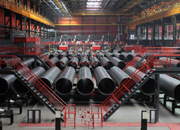 Threeway Steel is known as a professional supplier engaged in manufacturing and distributing a wide range of steel pipe, and our headquarter located the central part of China – Hunan and six associated factories throughout China.
Threeway Steel is known as a professional supplier engaged in manufacturing and distributing a wide range of steel pipe, and our headquarter located the central part of China – Hunan and six associated factories throughout China.
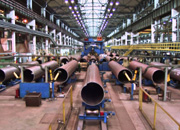 Threeway Steel is known as a professional supplier engaged in designing, manufacturing and distribution of a wide range of steel products with the headquarter located the central part of China – Hunan and six associated factories throughout China.
Threeway Steel is known as a professional supplier engaged in designing, manufacturing and distribution of a wide range of steel products with the headquarter located the central part of China – Hunan and six associated factories throughout China.
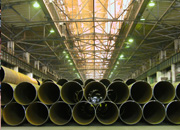 Threeway Steel is known as a professional supplier engaged in designing, manufacturing and distribution of a wide range of steel products with the headquarter located the central part of China – Hunan and six associated factories throughout China.
Threeway Steel is known as a professional supplier engaged in designing, manufacturing and distribution of a wide range of steel products with the headquarter located the central part of China – Hunan and six associated factories throughout China.
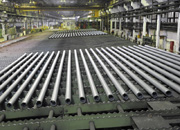 Threeway Steel is known as a professional supplier engaged in designing, manufacturing and distribution of a wide range of steel products with the headquarter located the central part of China – Hunan and six associated factories throughout China.
Threeway Steel is known as a professional supplier engaged in designing, manufacturing and distribution of a wide range of steel products with the headquarter located the central part of China – Hunan and six associated factories throughout China.
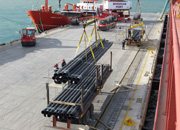 Threeway Steel is known as a professional supplier engaged in designing, manufacturing and distribution of a wide range of steel products with the headquarter located the central part of China – Hunan and six associated factories throughout China.
Threeway Steel is known as a professional supplier engaged in designing, manufacturing and distribution of a wide range of steel products with the headquarter located the central part of China – Hunan and six associated factories throughout China.

